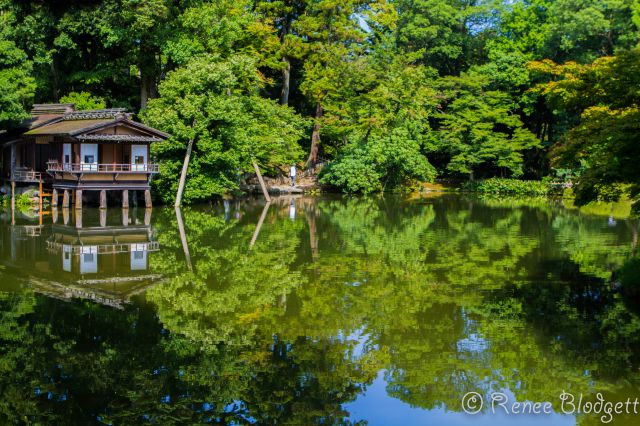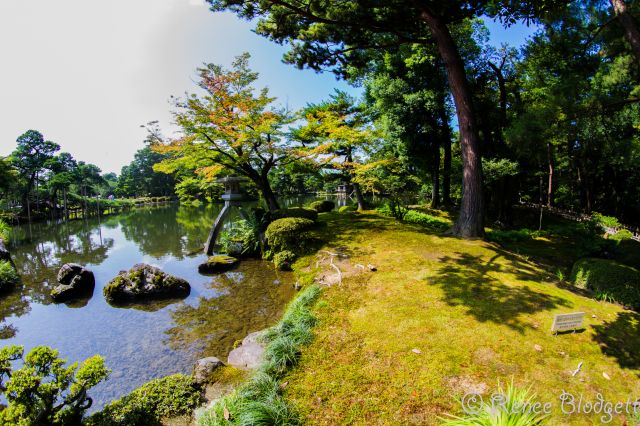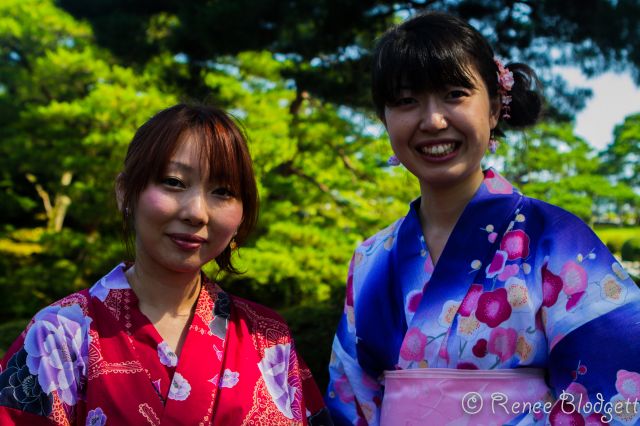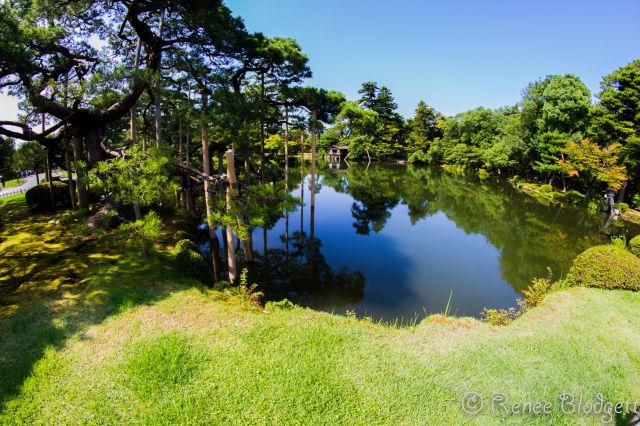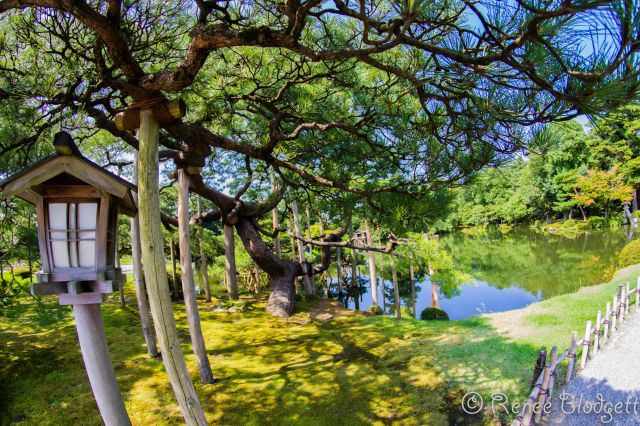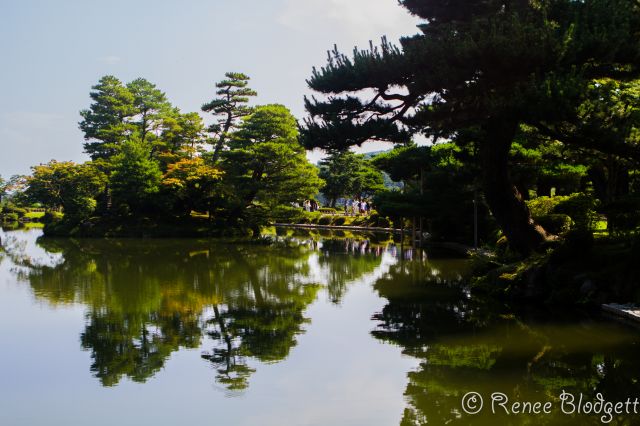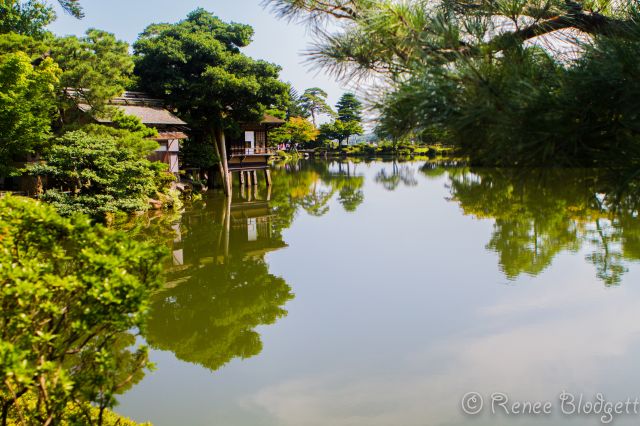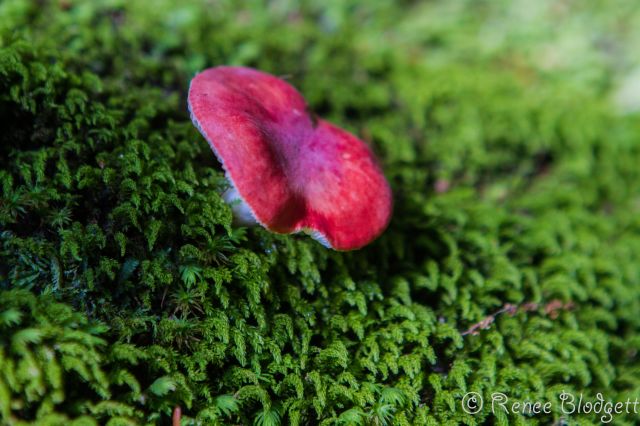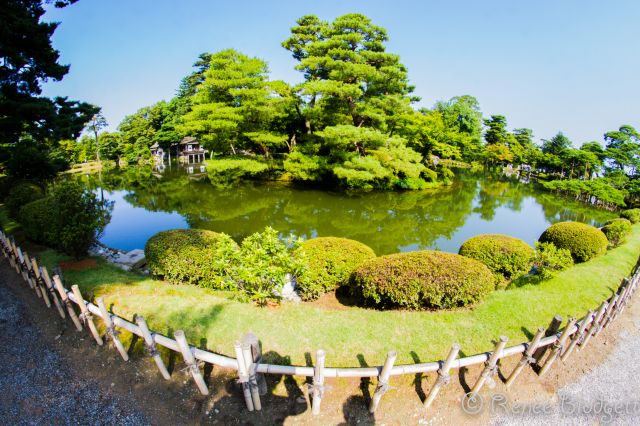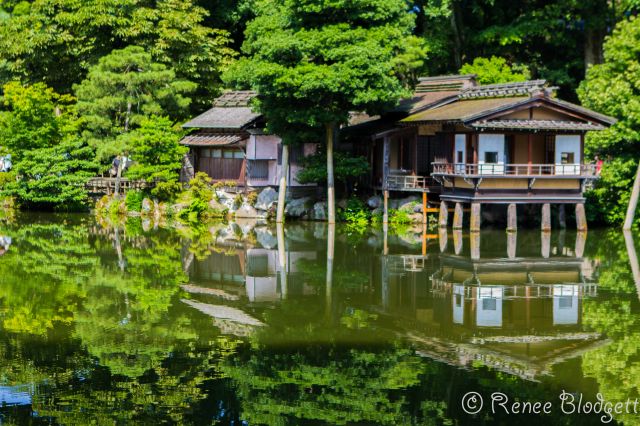Touted as one of Japan’s three most beautiful gardens is Kenrokuen Garden in Kanazawa Japan to the north of the country is a must for your Japan planning list. It covers 11.4 hectares on the heights of the central part of Kanazawa and next to Kanazawa Castle. The Maeda family, who ruled the Kaga Clan (the present Ishikawa and Toyama areas) in feudal times, maintained the garden from generation to generation. From its scale and beauty, it is regarded as one of the most beautiful feudal lords’ gardens in Japan.
Kenrokuen Garden has a big artificial pond, and hills and houses are dotted in the garden. Visitors can appreciate the whole, dropping in at them. The big pond called “Kasumigaike” was compared to an open sea, and an island, on which an ageless hermit with miraculous power was believed to live, was constructed in the pond in hope of the long life and eternal prosperity of the lord. Kenrokuen, which means “having six factors”, was given the name because of the six attributes that bring out the perfect landscape of the garden: spaciousness, tranquility, artifice, antiquity, water cources, and magnificent view from the garden.
There is a stone lantern designed in the image of the Japanese koto (harp) by the pond, which becomes the symbol of Kenrokuen Garden. There is a fountain created using the natural pressure of water flowing from the higher pond.
You can tap into the beauty of the flowers and trees, such as plum and cherry blossoms in spring, azaleas and irises early in summer, and colorful red and yellow leaves in autumn.
The Shigure-tei teahouse – constructed in 1725 – miraculously survived the fire of 1759, and it offers evidence that not only was the tea ceremony present before the fire, but more importantly so was the culture associated with this elaborate ritual as it had a significant effect on garden design. Following the fire, the teahouse continued to be used and was completely restored during the Meiji period. It can still be seen today in the Renchitei section of the garden.
Another object that existed in or around the garden before the fire of 1759 was the Kaisekito Pagoda, which is currently situated in Kenrokuen Garden on an island near the center of Hisago-ike Pond. Not only is this object of considerable interest due to the theories which suggest its origin, but it also requires extra consideration due to the fact it “was erected by the third lord Toshitsune” who lived from 1594-1658, as it provides evidence that perhaps it predates the initial creation of Renchitei Garden. Of course, this depends upon ones interpretation regarding both when the garden was initially created, along with the two theories regarding its origin. The first theory suggests it was formerly part of a “13-tiered pagoda that was once in the Gyokusen-in garden in Kanazawa Castle.”
The garden was named by Matsudaira Sadanobu at the request of Narinaga. Its name was derived from the “Chronicles of the Famous Luoyang Gardens”, a book by the Chinese poet Li Gefei and stands for the six attributes of a perfect landscape: spaciousness, seclusion, artifice, antiquity, waterways, and panoramas.
Have a look at what I encountered on my walk through the gardens.
For more posts on Japan, see our Japan section and on Tokyo, visit our Tokyo Japan / top things to do in Tokyo section.

Renee Blodgett is the founder of We Blog the World. The site combines the magic of an online culture and travel magazine with a global blog network and has contributors from every continent in the world. Having lived in 10 countries and explored nearly 80, she is an avid traveler, and a lover, observer and participant in cultural diversity.
She is also the CEO and founder of Magic Sauce Media, a new media services consultancy focused on viral marketing, social media, branding, events and PR. For over 20 years, she has helped companies from 12 countries get traction in the market. Known for her global and organic approach to product and corporate launches, Renee practices what she pitches and as an active user of social media, she helps clients navigate digital waters from around the world. Renee has been blogging for over 16 years and regularly writes on her personal blog Down the Avenue, Huffington Post, BlogHer, We Blog the World and other sites. She was ranked #12 Social Media Influencer by Forbes Magazine and is listed as a new media influencer and game changer on various sites and books on the new media revolution. In 2013, she was listed as the 6th most influential woman in social media by Forbes Magazine on a Top 20 List.
Her passion for art, storytelling and photography led to the launch of Magic Sauce Photography, which is a visual extension of her writing, the result of which has led to producing six photo books: Galapagos Islands, London, South Africa, Rome, Urbanization and Ecuador.
Renee is also the co-founder of Traveling Geeks, an initiative that brings entrepreneurs, thought leaders, bloggers, creators, curators and influencers to other countries to share and learn from peers, governments, corporations, and the general public in order to educate, share, evaluate, and promote innovative technologies.

